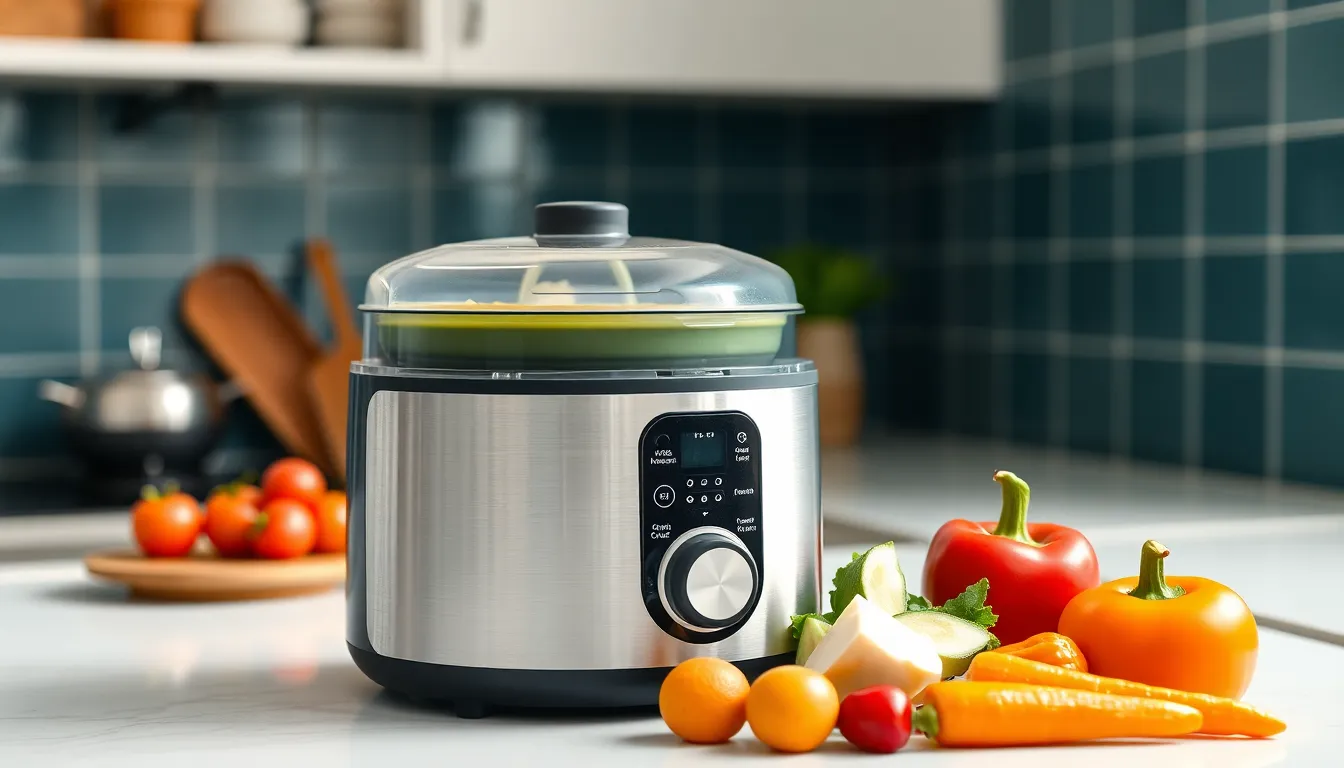In a world where gourmet meals get Instagrammed and foodies reign supreme, why should babies miss out? Enter the baby food maker—a superhero in the kitchen, ready to transform ordinary ingredients into culinary masterpieces for little ones. With these nifty gadgets, parents can whip up organic purees and delectable blends faster than a toddler can throw a tantrum.
Table of Contents
ToggleOverview of Baby Food Makers
Baby food makers serve as crucial kitchen appliances for parents. They enable efficient preparation of nutritious meals for infants. With these devices, creating homemade purees becomes simple and hassle-free.
Different models cater to various needs. Some offer steaming functions, which preserve essential nutrients. Others focus on blending, allowing for smooth textures perfect for young eaters. Compact designs fit well in kitchens with limited space.
Parents can select from multifunctional units. Many makers combine steaming and blending, streamlining the process. Users save time, benefiting from features like automatic timers and easy-clean components.
Choosing the right baby food maker involves considering several factors. Ease of use, safety features, and capacity impact decision-making. Product reviews often highlight the importance of BPA-free materials for health-conscious consumers.
In addition, price ranges vary significantly among baby food makers. Typically, budget-friendly options cost around $30, while premium models may reach $200. Comparing brands and user feedback guides informed purchases.
Overall, these devices provide convenience and control over baby nutrition. By preparing meals at home, parents ensure quality ingredients are used. Baby food makers empower families to introduce wholesome flavors and textures early on.
Types of Baby Food Makers

Baby food makers fall into various categories, each with distinct features catering to different needs. Understanding these types helps parents make informed choices.
Traditional vs. Electric
Traditional baby food makers require manual efforts for chopping, steaming, and blending. These options often consist of simple pots and blenders, giving parents full control over the cooking process. Electric baby food makers automate these tasks, streamlining meal preparation. Many electric models include settings for steaming and pureeing, saving time while ensuring that nutrients remain intact. Both types offer benefits; traditional options promote hands-on cooking, while electric machines provide convenience for busy parents.
Multi-functional Options
Multi-functional baby food makers combine multiple functions into one unit. These appliances often blend, steam, and even warm food, eliminating the need for several gadgets. Some models allow parents to prepare large batches, saving time on cooking sessions. Features like self-cleaning and programmable settings enhance usability. These versatile devices meet diverse cooking needs, accommodating the varied preferences of parents seeking efficiency in meal prep. For families on the go, multi-functional options stand out as practical solutions for busy lifestyles.
Key Features to Consider
Choosing a baby food maker involves several important features that enhance the cooking experience.
Ease of Use
Ease of use greatly influences the selection of a baby food maker. Look for models with intuitive controls that simplify operation. One-touch buttons make starting the cooking process straightforward. Ensure the device has a user-friendly interface to facilitate quick adjustments. Lightweight construction allows for easy handling and storage. Consider options with clear measurement markings on containers, making ingredient preparation simple. LED indicators can provide visual confirmation of the cooking status.
Cleaning and Maintenance
Cleaning and maintenance are essential for prolonging the life of the baby food maker. Opt for models with dishwasher-safe components for hassle-free cleaning. Non-stick surfaces reduce food residue, minimizing scrubbing efforts. Look for units with removable parts that facilitate thorough washing. Components that can withstand exposure to moisture promote durability. Regular maintenance checks on seals and blades ensure optimal performance. An easy-to-dismantle design aids in cleaning hard-to-reach areas, enhancing hygiene.
Top Baby Food Makers on the Market
Several baby food makers stand out for their performance and convenience. Each model offers unique features catering to different needs.
Product Reviews
The Baby Brezza is popular for its one-step operation, mixing ingredients seamlessly. A strong heating system ensures food is evenly cooked. The Nourish by QOOC features a compact design and multiple cooking settings ideal for smaller kitchens. Parents appreciate its easy clean-up process. The Beaba Babycook excels in versatility, allowing for steaming, blending, and reheating. Many users praise its stylish look and user-friendly interface. Each of these makers simplifies meal prep, giving parents confidence in their food choices.
Comparison of Features and Prices
Models vary widely in features and prices. The Baby Brezza retails around $120 and focuses on automated steaming and blending. In contrast, the Nourish by QOOC is priced at approximately $100, offering a smaller capacity with multiple cooking settings. The Beaba Babycook sits at the premium end, usually costing about $200, and combines several functions in one appliance. Traditional models start at $30 for manual options, appealing to budget-conscious parents. When considering capacity and functionality, parents must evaluate individual needs to choose the best fit.
Benefits of Using Baby Food Makers
Baby food makers offer numerous advantages for parents preparing meals for their infants. Efficiency stands out, as these appliances streamline the process of creating healthy purees and blends. Quick meal preparation saves time, allowing parents to focus on other responsibilities.
Nutritional quality remains a primary benefit. Homemade baby food retains essential vitamins and minerals, ensuring babies receive the best nourishment. Control over ingredients promotes transparency, reducing exposure to preservatives and additives found in commercial baby foods.
Versatility enhances the appeal of baby food makers. Many models offer steaming and blending functions, catering to different texture preferences. Options for reheating and warming provide added convenience, especially during nighttime feedings.
Safety features should also be considered. Most baby food makers use BPA-free materials, promoting health-conscious choices for parents. These gadgets incorporate designs to prevent overheating or spills, adding peace of mind during use.
Space-saving designs suit both compact and larger kitchens. Some models boast a sleek appearance, fitting seamlessly into various kitchen aesthetics. Portability allows for easy storage when not in use.
Affordability varies significantly. Budget-friendly baby food makers start around $30, while premium models can reach up to $200. Parents can select devices based on their specific needs and financial constraints.
Ultimately, baby food makers empower parents to prepare nutritious meals at home. Variety in flavors and textures fosters healthy eating habits from an early age. These benefits underscore the importance of investing in quality tools for infant nutrition.
Baby food makers are invaluable tools for parents dedicated to providing nutritious meals for their little ones. With their ability to streamline meal prep and ensure the preservation of essential nutrients, these appliances make it easier to introduce a variety of flavors and textures early on.
Whether opting for a traditional model or a high-tech electric version, the right baby food maker can cater to individual preferences and kitchen needs. By considering factors like safety features and ease of cleaning, parents can confidently choose a device that fits their lifestyle. Investing in a baby food maker not only simplifies cooking but also empowers parents to foster healthy eating habits from the very start.



